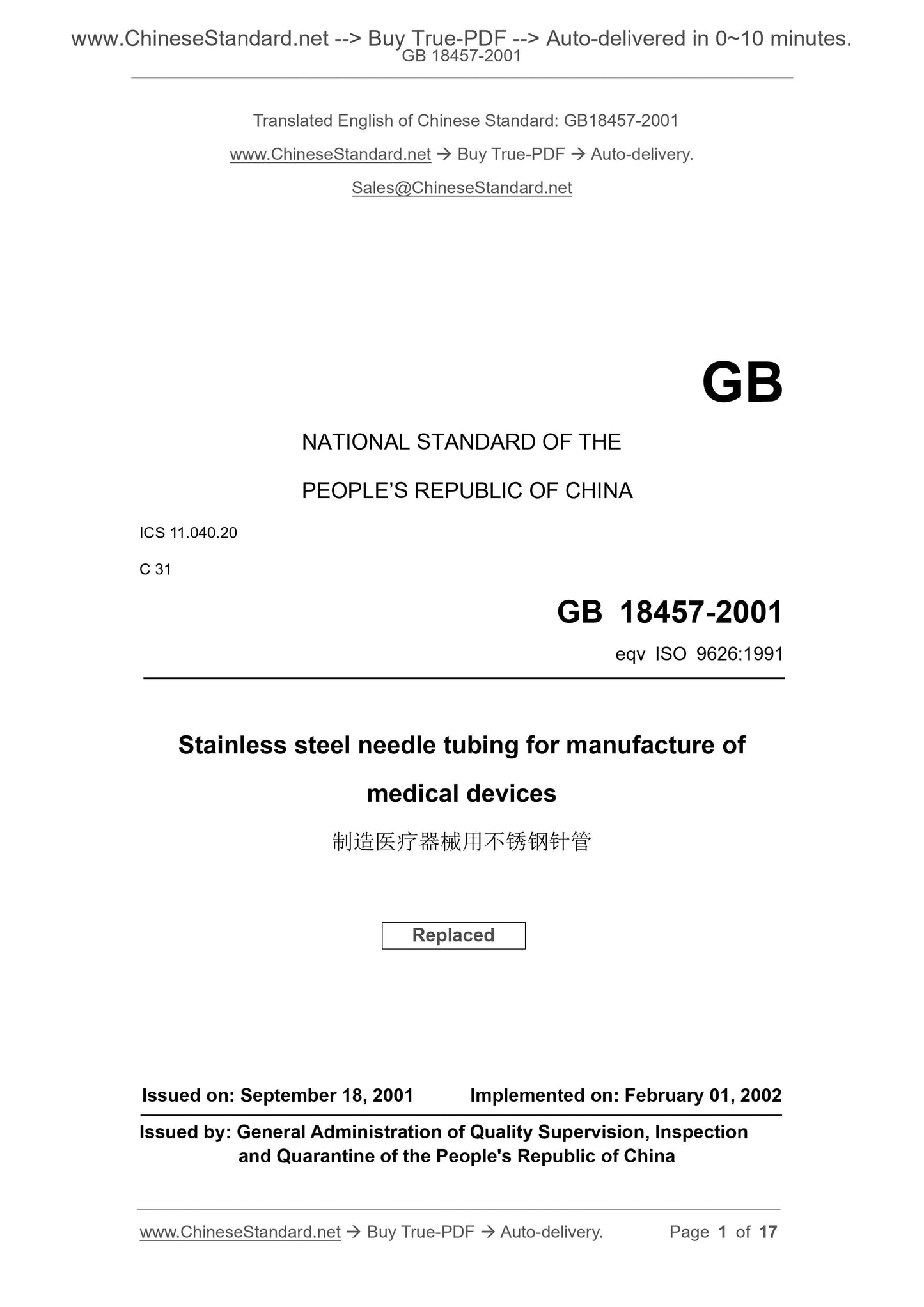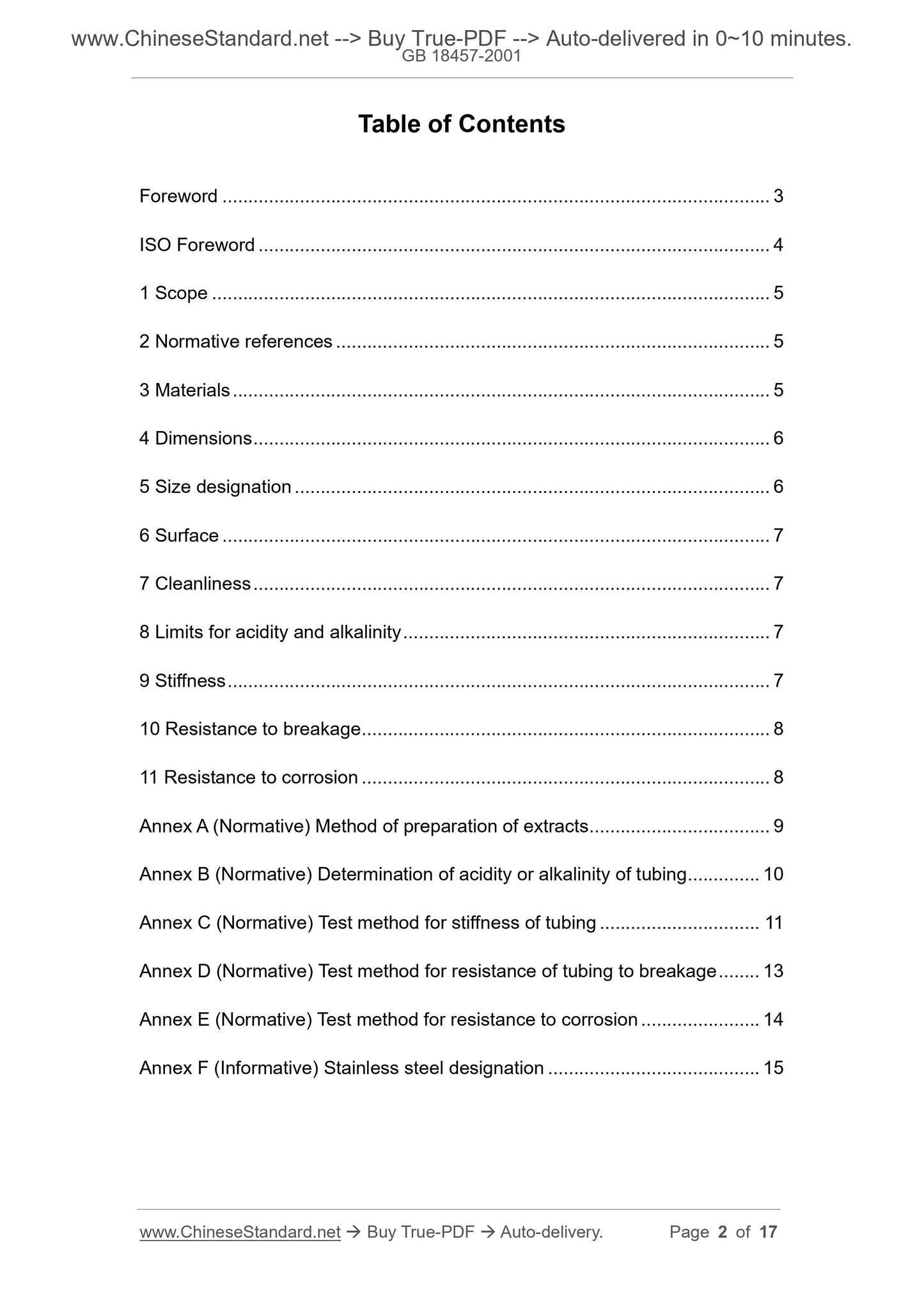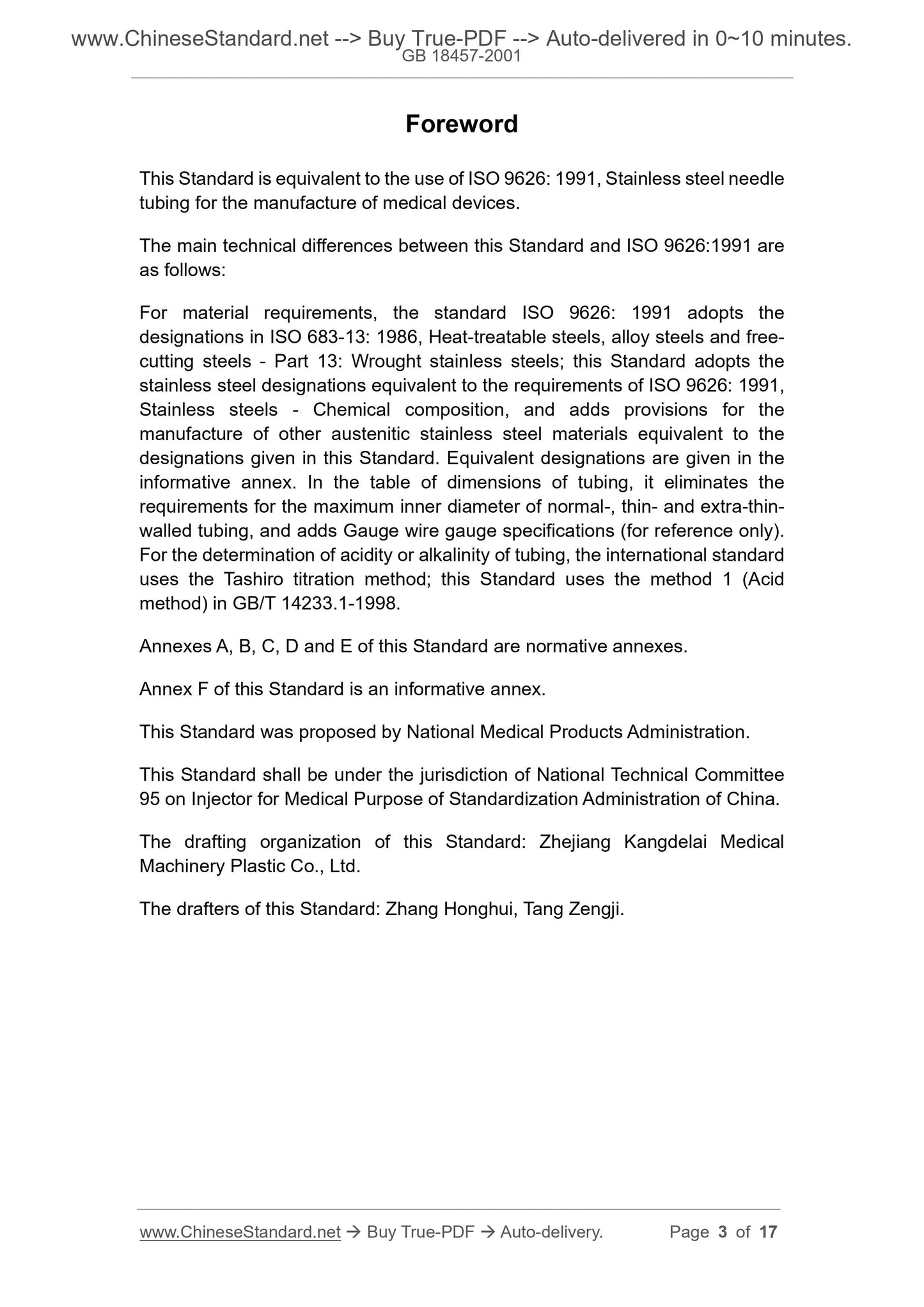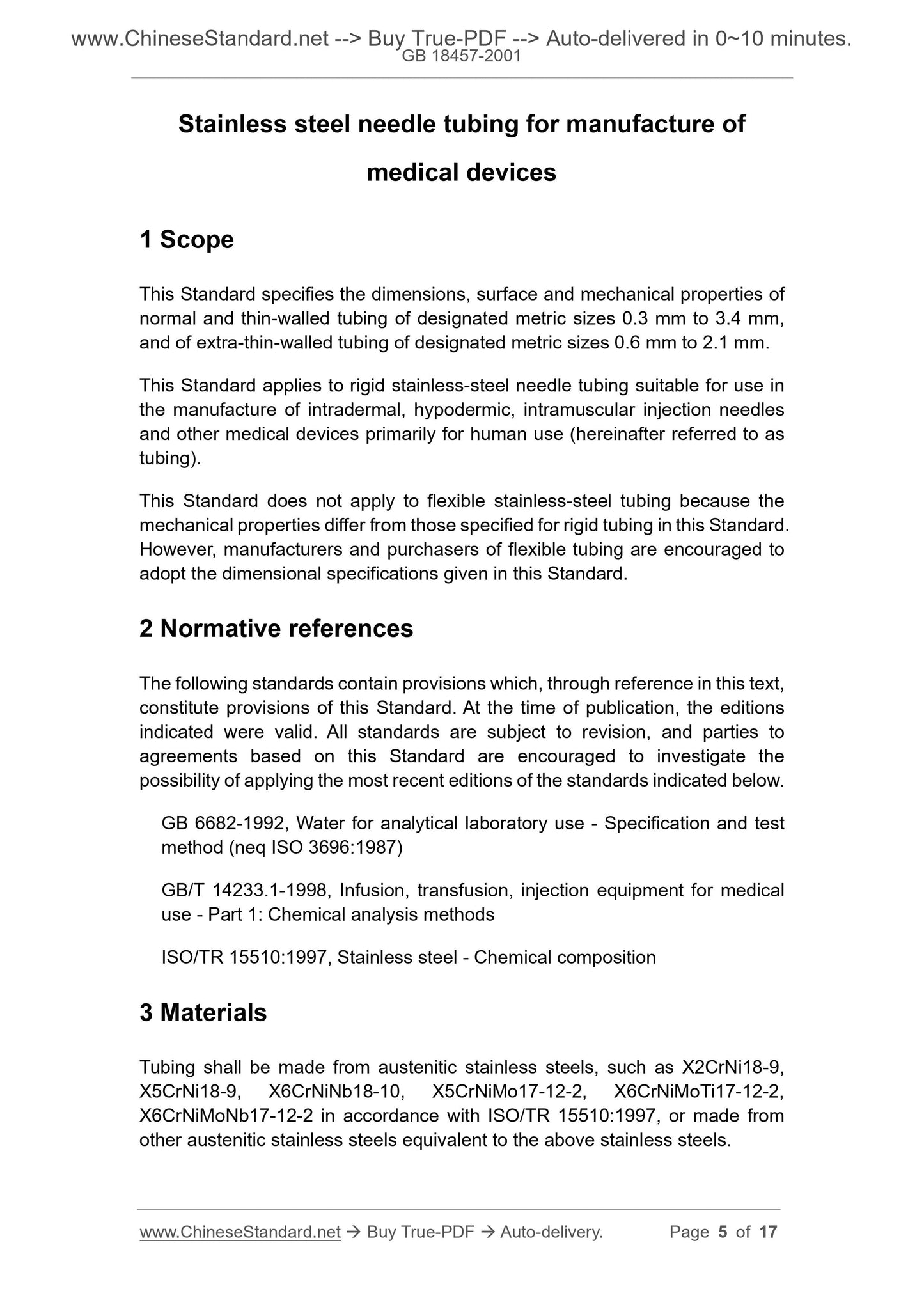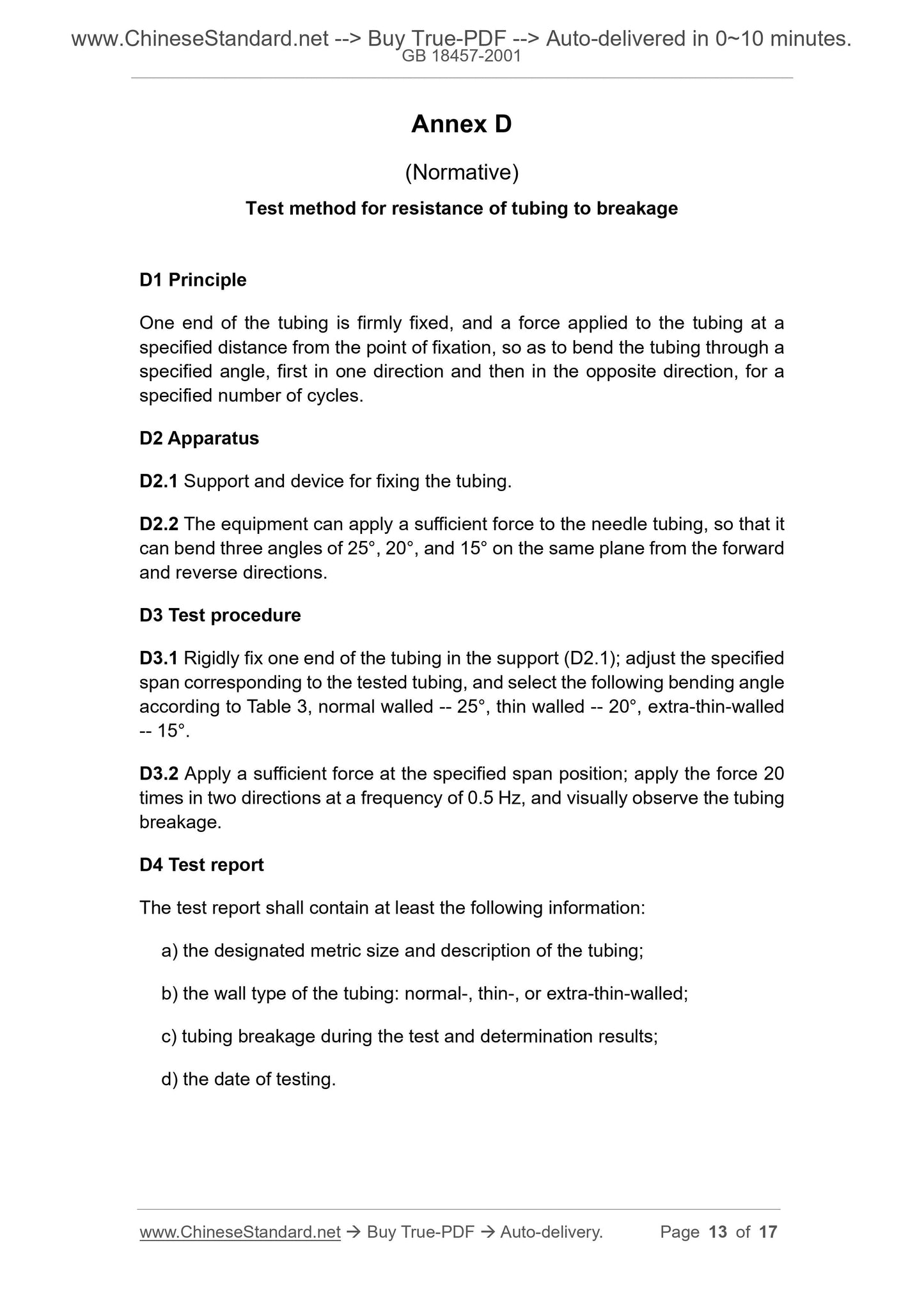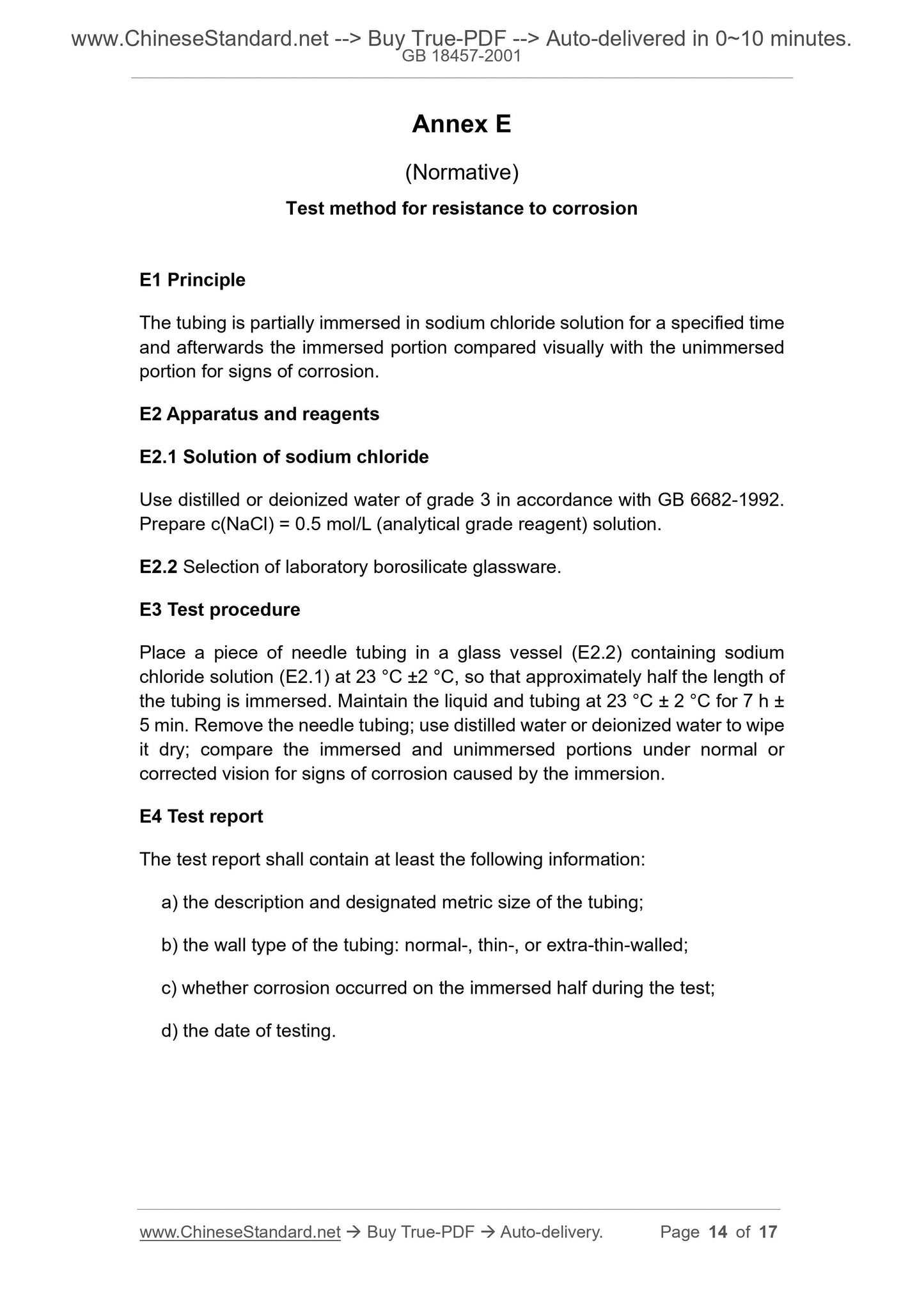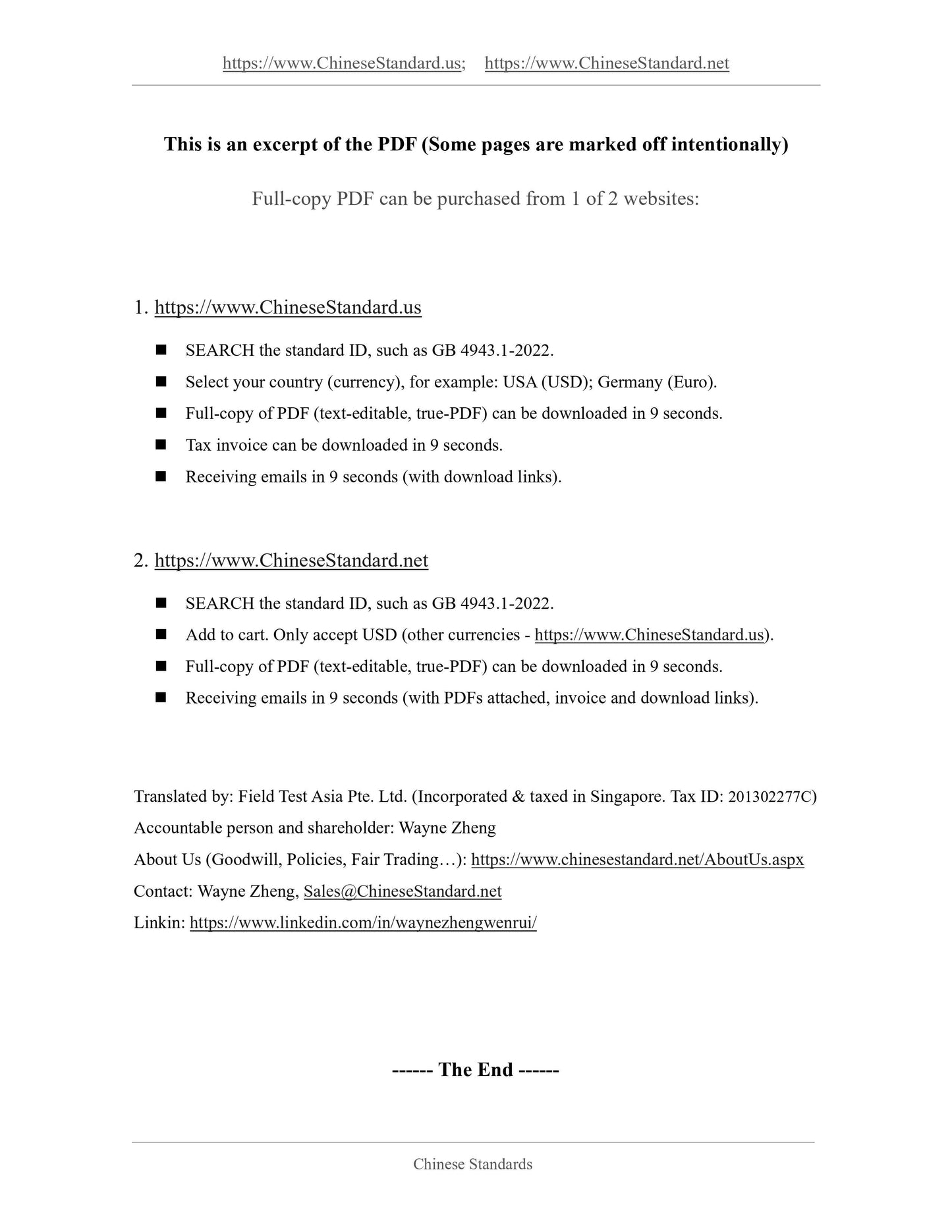1
/
of
7
PayPal, credit cards. Download editable-PDF and invoice in 1 second!
GB 18457-2001 English PDF
GB 18457-2001 English PDF
Regular price
$70.00
Regular price
Sale price
$70.00
Unit price
/
per
Shipping calculated at checkout.
Couldn't load pickup availability
GB 18457-2001: Stainless steel needle tubing for manufacture of medical devices
Delivery: 9 seconds. Download (and Email) true-PDF + Invoice.Get Quotation: Click GB 18457-2001 (Self-service in 1-minute)
Newer / historical versions: GB 18457-2001
Preview True-PDF
Scope
This Standard specifies the dimensions, surface and mechanical properties ofnormal and thin-walled tubing of designated metric sizes 0.3 mm to 3.4 mm,
and of extra-thin-walled tubing of designated metric sizes 0.6 mm to 2.1 mm.
This Standard applies to rigid stainless-steel needle tubing suitable for use in
the manufacture of intradermal, hypodermic, intramuscular injection needles
and other medical devices primarily for human use (hereinafter referred to as
tubing).
This Standard does not apply to flexible stainless-steel tubing because the
mechanical properties differ from those specified for rigid tubing in this Standard.
However, manufacturers and purchasers of flexible tubing are encouraged to
adopt the dimensional specifications given in this Standard.
Basic Data
| Standard ID | GB 18457-2001 (GB18457-2001) |
| Description (Translated English) | Stainless steel needle tubing for manufactureof medical devices |
| Sector / Industry | National Standard |
| Classification of Chinese Standard | C31 |
| Classification of International Standard | 11.040.20 |
| Word Count Estimation | 12,131 |
| Date of Issue | 2001-09-18 |
| Date of Implementation | 2002-02-01 |
| Quoted Standard | GB 6682-1992; GB/T 14233.1-1998; ISO/TR 15510: 1997 |
| Adopted Standard | ISO 9626-1991, MOD |
| Issuing agency(ies) | General Administration of Quality Supervision, Inspection and Quarantine of the People Republic of China |
| Summary | This Chinese standard specifies the metric sizes 0. 3mm to 3. 4mm normal wall, 0. 6mm to 2. 1mm thin and ultra-thin wall tube size, surface and mechanical properties. This standard applies to the manufacture of human intradermal, subcutaneous, intramuscular needle needles and other medical equipment with a hard straight stainless steel needle. This standard does not apply pliable stainless steel needle tube, because of its mechanical properties different from those specified in this standard hard straight stainless steel needle. But encouraging Yi curved needle tube manufacturer and the purchaser choose the provisions of this standard size. |
Share
